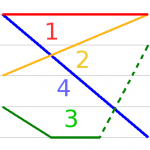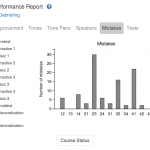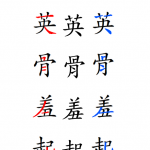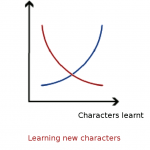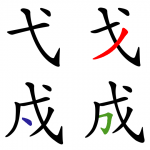Articles in the ‘Distinctively Chinese’ category Page 11
-
Learning tones in Mandarin is not optional
Learning tones in Mandarin is not optional. The longer you wait before paying attention to tones, the more you will have to relearn later. If you don’t know the tone, you don’t know the word. It takes time to learn to hear tones and treat them as integral parts of syllables, but the sooner you start, the better.
Read → -
The Hacking Chinese free tone training course
Learning to hear the difference between tones is difficult for many learners. Research shows that speaker variability and a systematic and predictable approach are key to overcoming the problem. With this article, I launch a tone training course, which is meant to provide you with just that. For free!
Read → -
How to verify that you use the right Chinese font
For second language learners, using the wrong font can make learning characters very confusing. In this article, I will help you verify that you have the right fonts installed and discuss what happens if you don’t. This is a follow-up to an earlier article about Chinese fonts for students.
Read → -
Learning to pronounce Mandarin with Pinyin, Zhuyin and IPA: Part 3
As adults, understanding is important when learning pronunciation. One way to achieve this is through the International Phonetic Alphabet (IPA), which will allow you to see the sounds your ears might fail to hear. Learning IPA also means learning basic phonetics, and that will do you good in the long run!
Read → -
The real challenge with learning Chinese characters
The real challenge when learning Chinese characters is not to commit a large number of them to memory, it’s to relate them to each other, including how they are used, how they are different and how they are similar. Creating such an interconnected web is a lifelong project.
Read → -
Can native speakers be wrong about Chinese grammar and pronunciation?
What does it mean when something is said to be “correct” in Chinese? Who’s right if all the people around you say something, but the dictionary says something else? Mandarin is a huge language spoken my a very large number of people, so some variation is to be expected. This article is about the flexibility of Mandarin and how to deal with it as a student.
Read → -
Learning Chinese characters through pictures
This article is about using pictures to learn Chinese characters. In order to learn characters efficiently, it’s important to understand how they work and what the building blocks are so that these can be used in other characters. Any pictures you use to remember should be based on this. Avoid using pictures that obscure the real meaning.
Read → -
Panning: How to keep similar Chinese characters and words separate
The real challenge when learning Chinese characters and words isn’t to remember them, it’s to keep them separate from each other. This article concludes my series about zooming and panning to integrate your knowledge better.
Read → -
Zooming out: The resources you need to put Chinese in context
In order to learn efficiently, it’s important that you integrate your knowledge. This means being able to break down Chinese in order to understand it, as well as looking at context and sorting out confusing cases. In this second article, I introduce tools for zooming out and putting things in context.
Read → -
Zooming in: The tools you need to break down and understand Chinese
In order to learn efficiently, it’s important that you integrate your knowledge. This means being able to break down Chinese in order to understand it, but it also means looking at context and sorting out confusing cases. In this first article, I introduce tools for breaking Chinese down.
Read →
